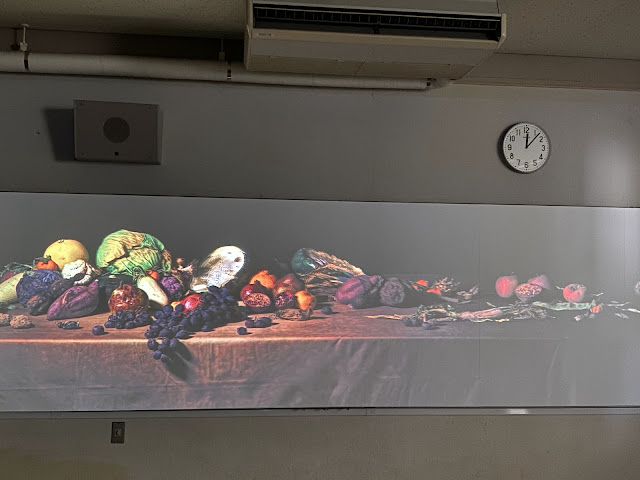Bicycle: 66 km
Train: 53 km
Total ascent: 565 m
Average speed: 13,4 km/h
Riding time: 4:54 h
Weather: sunny a few clouds but not THAT warm, 18C
Today was another perfect day, that didn’t go to plan. I got up relatively early and took a train from Okayama over to Shikoku. It passes over a long bridge going through the Setonaikai dotted with islands. I got off at the first stop on Shikoku, assembled the bicycle, and then set out to the art exhibits around the bridge.
The first piece of art I saw was this small hill, which wasn’t a tomb, like the slightly bigger hill I saw a few days ago in Kibi plain.
From there, I followed the signs for some other pieces of art around it, none of which really impressed me.
In the small village of Seicho, they were three abandoned schools. The kindergarten, elementary school and junior high school.well now closed and used as temporary exhibition sites for this art festival. However, the artists didn’t seem to have a lot of ideas, so most of the exhibits in all three schools were kind of just stuff that was already in those school buildings abandoned, put together and reclaimed as art.
There was really only one piece of art that I thought was interesting. It was a still life photographed over several weeks in a style similar to Caravaggio. It started with a very abundant display of fruit and vegetables, very colorful and apparently full of life in front of a dark background. Initially, you didn’t notice anything, but looking at it for some time, one could appreciate the change from this fresh, full of vitality, display of fruits and vegetables, to the decay.on the wall behind, there was still a clock from the school, which every minute was the change of the hand gave a loud noise. So you could hear the passing of time, while seeing it reflected in the unstoppable decay of rotting fruits, and vegetables.
With all this art time flew by. At one of the schools, there was even a service for some lunchboxes, and freshly fried fish, so I had lunch there, and it was clearly too late to ride to Kotohira shrine and make it up there.It’s already the second time I’m here in this area of Shikoku and do not manage to get to this famous shrine. So a good reason to come back sometime in the future.
Instead, I saw that there was one piece of art that still belongs to this area, which was between the area around the bridge and Takamatsu. So I replant the ride to get to also this piece of art. Which essentially was a small village park with a bench and a place to light a bonfire.
It was however, early enough to make it to Takamatsu and still have more than sufficient time to see again the superb Ritsurin garden.this is definitely the best Japanese garden that I have seen. Although it didn’t make it on the official list of the three best gardens. What I really like about it how it incorporates the nature around it into the garden. It offers so many different view points that you could easily spend an entire day in this garden discovering new views.










No comments:
Post a Comment